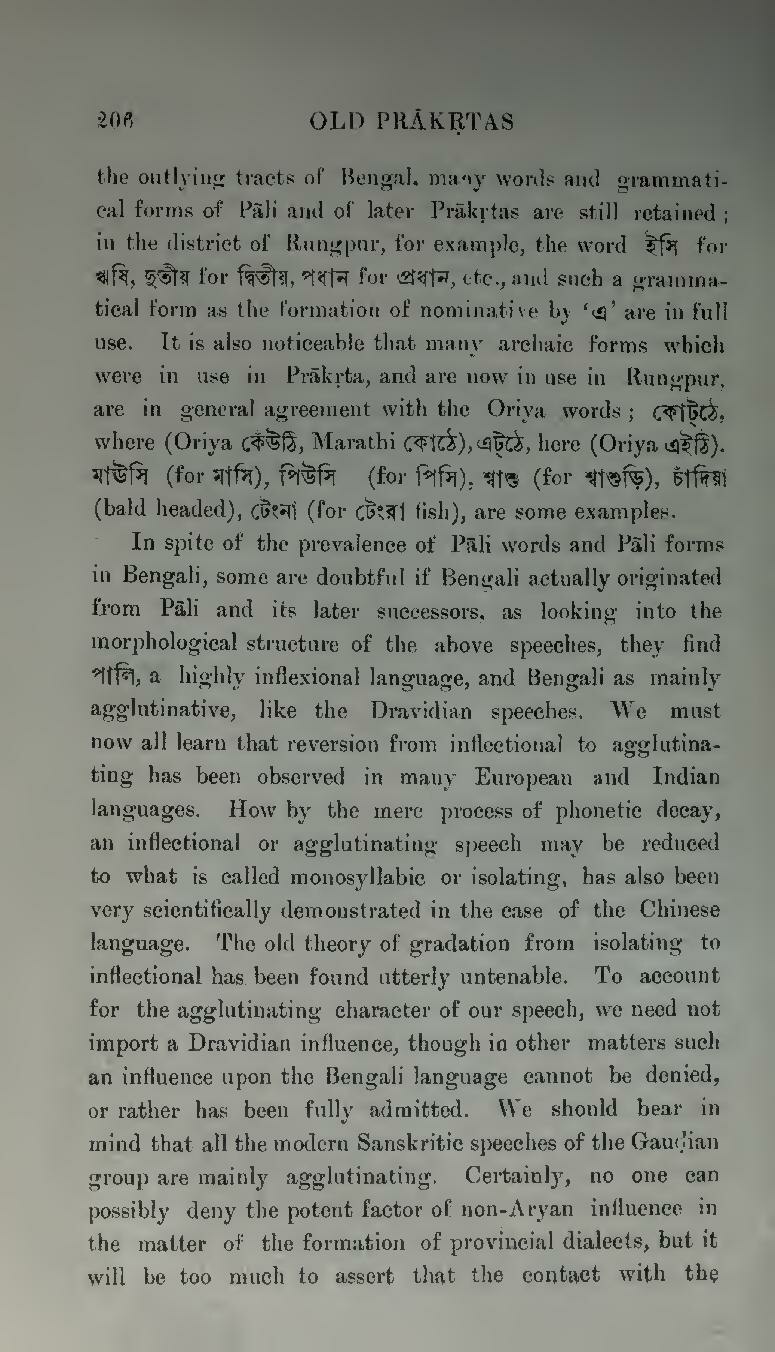the outlying tracts of Bengal, many words and grammatical forms of Pāli and of later Prākṛtas are still retained; in the district of Rungpur, for example, the word ইসি for ঋষি, দুতীয় for দ্বিতীয়, পধান for প্রধান, etc., and such a grammatical form as the formation of nominative by 'এ' are in full use. It is also noticeable that many archaic forms which were in use in Prākṛta, and are now in use in Rungpur, are in general agreement with the Oriya words; কোট্ঠে, where (Oriya কেঁউঠি, Marathi কোঠে), এট্ঠে, here (Oriya এইঠি). মাঊসি (for মাসি), পিউসি (for পিসি), শ্বাসু (for শ্বাশুড়ি), চাঁদিয়া (bald headed), টেংনা (for টেংরা fish), are some examples.
In spite of the prevalence of Pāli words and Pāli forms in Bengali, some are doubtful if Bengali actually originated from Pāli and its later successors, as looking into the morphological structure of the above speeches, they find পালি, a highly inflexional language, and Bengali as mainly agglutinative, like the Dravidian speeches. We must now all learn that reversion from inflectional to agglutinating has been observed in many European and Indian languages. How by the mere process of phonetic decay, an inflectional or agglutinating speech may be reduced to what is called monosyllabic or isolating, has also been very scientifically demonstrated in the case of the Chinese language. The old theory of gradation from isolating to inflectional has been found utterly untenable. To account for the agglutinating character of our speech, we need not import a Dravidian influence, though in other matters such an influence upon the Bengali language cannot be denied, or rather has been fully admitted. We should bear in mind that all the modern Sanskritic speeches of the Gauḍian group are mainly agglutinating. Certainly, no one can possibly deny the potent factor of non-Aryan influence in the matter of the formation of provincial dialects, but it will be too much to assert that the contact with the
